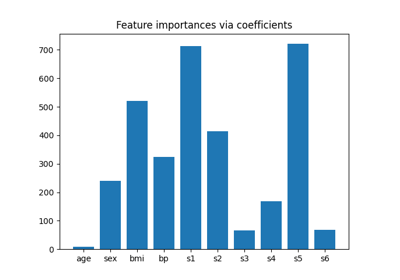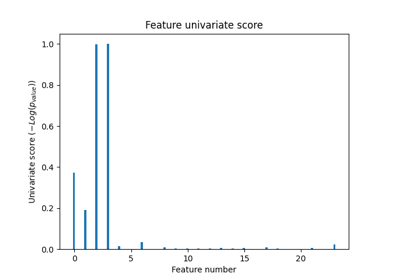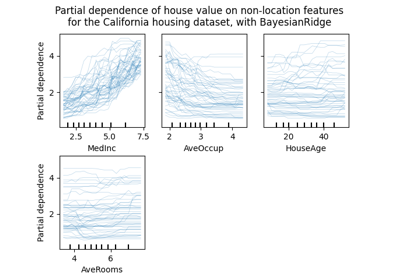备注
Go to the end 下载完整的示例代码。或者通过浏览器中的MysterLite或Binder运行此示例
流水线ANOVA SVM#
此示例展示了如何将特征选择轻松集成到机器学习管道中。
我们还表明,您可以轻松检查管道的部分。
# Authors: The scikit-learn developers
# SPDX-License-Identifier: BSD-3-Clause
我们将首先生成二进制分类数据集。随后,我们将将数据集分为两个子集。
from sklearn.datasets import make_classification
from sklearn.model_selection import train_test_split
X, y = make_classification(
n_features=20,
n_informative=3,
n_redundant=0,
n_classes=2,
n_clusters_per_class=2,
random_state=42,
)
X_train, X_test, y_train, y_test = train_test_split(X, y, random_state=42)
特征选择的一个常见错误是在完整数据集中搜索区分性特征的子集,而不是仅使用训练集。scikit-learn的使用 Pipeline 防止犯这样的错误。
在这里,我们将演示如何构建管道,其中的第一步是功能选择。
打电话时 fit 在训练数据上,将选择特征的子集并存储这些所选特征的索引。特征选择器随后将减少特征的数量,并将此子集传递给将被训练的分类器。
from sklearn.feature_selection import SelectKBest, f_classif
from sklearn.pipeline import make_pipeline
from sklearn.svm import LinearSVC
anova_filter = SelectKBest(f_classif, k=3)
clf = LinearSVC()
anova_svm = make_pipeline(anova_filter, clf)
anova_svm.fit(X_train, y_train)
一旦训练完成,我们就可以预测新的未见样本。在这种情况下,特征选择器将仅根据训练期间存储的信息选择最具区分性的特征。然后,数据将被传递给分类器,并进行预测。
在这里,我们通过分类报告显示最终的指标。
from sklearn.metrics import classification_report
y_pred = anova_svm.predict(X_test)
print(classification_report(y_test, y_pred))
precision recall f1-score support
0 0.92 0.80 0.86 15
1 0.75 0.90 0.82 10
accuracy 0.84 25
macro avg 0.84 0.85 0.84 25
weighted avg 0.85 0.84 0.84 25
请注意,您可以检查管道中的一个步骤。例如,我们可能对分类器的参数感兴趣。由于我们选择了三个特征,因此我们预计有三个系数。
anova_svm[-1].coef_
array([[0.75788833, 0.27161955, 0.26113448]])
然而,我们不知道从原始数据集中选择了哪些特征。我们可以通过多种方式进行。在这里,我们将颠倒这些系数的变换,以获取有关原始空间的信息。
anova_svm[:-1].inverse_transform(anova_svm[-1].coef_)
array([[0. , 0. , 0.75788833, 0. , 0. ,
0. , 0. , 0. , 0. , 0.27161955,
0. , 0. , 0. , 0. , 0. ,
0. , 0. , 0. , 0. , 0.26113448]])
我们可以看到,系数非零的特征是第一步选择的特征。
Total running time of the script: (0分0.010秒)
相关实例
Gallery generated by Sphinx-Gallery <https://sphinx-gallery.github.io> _




